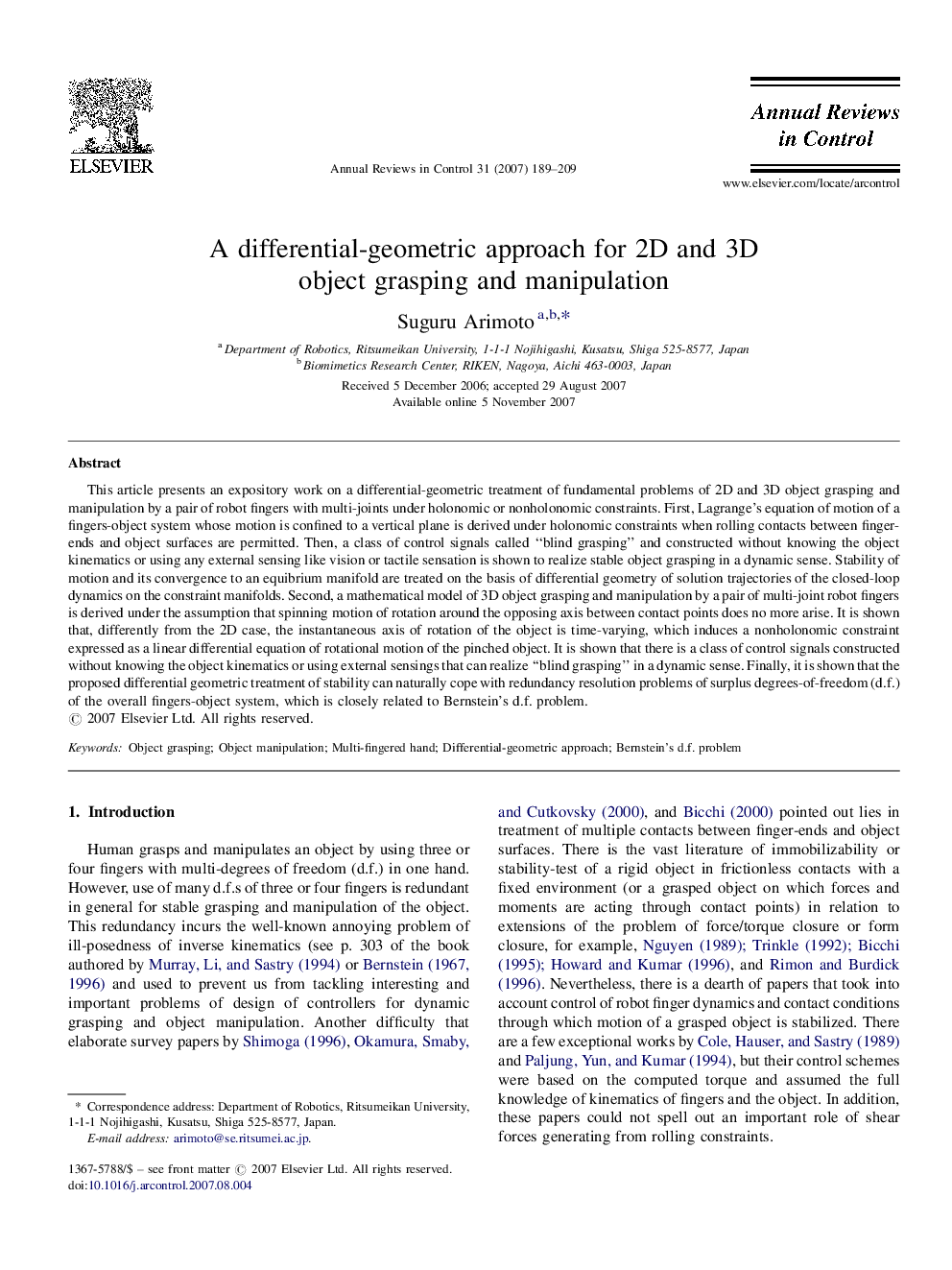| Article ID | Journal | Published Year | Pages | File Type |
|---|---|---|---|---|
| 694852 | Annual Reviews in Control | 2007 | 21 Pages |
This article presents an expository work on a differential-geometric treatment of fundamental problems of 2D and 3D object grasping and manipulation by a pair of robot fingers with multi-joints under holonomic or nonholonomic constraints. First, Lagrange’s equation of motion of a fingers-object system whose motion is confined to a vertical plane is derived under holonomic constraints when rolling contacts between finger-ends and object surfaces are permitted. Then, a class of control signals called “blind grasping” and constructed without knowing the object kinematics or using any external sensing like vision or tactile sensation is shown to realize stable object grasping in a dynamic sense. Stability of motion and its convergence to an equibrium manifold are treated on the basis of differential geometry of solution trajectories of the closed-loop dynamics on the constraint manifolds. Second, a mathematical model of 3D object grasping and manipulation by a pair of multi-joint robot fingers is derived under the assumption that spinning motion of rotation around the opposing axis between contact points does no more arise. It is shown that, differently from the 2D case, the instantaneous axis of rotation of the object is time-varying, which induces a nonholonomic constraint expressed as a linear differential equation of rotational motion of the pinched object. It is shown that there is a class of control signals constructed without knowing the object kinematics or using external sensings that can realize “blind grasping” in a dynamic sense. Finally, it is shown that the proposed differential geometric treatment of stability can naturally cope with redundancy resolution problems of surplus degrees-of-freedom (d.f.) of the overall fingers-object system, which is closely related to Bernstein’s d.f. problem.
